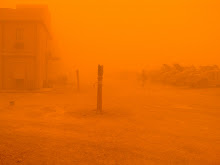All personnel exposed to a blistering substance dug up at the Army's Joint Readiness Training Center at Fort Polk have been medically cleared, a release from Fort Polk says.
Three glass vials were accidentally broken when a backhoe operator dug them up during construction on North Fort Polk. Preliminary tests suggested the substance was a diluted mustard and blistering agent, according to experts from Pine Bluff Arsenal, Ark.
John Costa, installation safety officer, said the vials were likely from a Chemical Agent Identification Set. The sets were used to train soldiers during World War II and the Vietnam War, specifically on how to identify and decontaminate chemical agents. Vials would be detonated by blasting caps, then soldiers would walk through the cloud to become familiar with the odor. Similar training is often conducted by police and emergency personnel to better understand the effects of tear gas and other crowd control agents.
"The vials were uncovered in an area of North Fort where World War II structures are located," Costa said. "This is an area that hasn't seen any construction since the 1940s. And we all know the massive amount of training that took place on the installation during World War II and the Vietnam conflict."
Similar training also was conducted on parts of the east reservation of Barksdale Air Force Base when it was under Army control during World War II.
After the vials were uncovered, a decontamination tent was set up on site. Following decontamination, exposed personnel were taken to Bayne-Jones Community Army Hospital, where they were evaluated, cleared and released. They were also cleared during a follow-up exam.
Before Environmental Protection Agency regulations were introduced in the 1970s, burial was a standard and approved method of vial disposal.
Costa said vials have been found on Fort Polk before.
"We've had vials uncovered at the golf course in the 1990s and at one of the ranges back in the 1980s," he said. "In both cases, these were old training sets."
Subscribe to:
Post Comments (Atom)




No comments:
Post a Comment